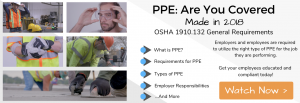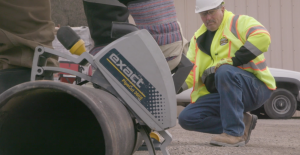
November 19, 2018
What PPE should I use for the job? – Conducting a Hazard Assessment


November 19, 2018

PPE otherwise known as Personal Protective Equipment is the safety equipment worn to minimize the risk of exposure to hazards or injuries on the job site.
PPE is used to provide protection against workplace hazards and should be used simultaneously with administrative controls, engineering controls, and workplace safety practices. Employers and employees should not solely depend on PPE for protection, good work practices will decrease incidents and near-misses.

It’s up to the employer to conduct a “hazard assessment” of the work environment to determine the right type of PPE for the job. This crucial step will identify the potential physical or health-related hazards that are present in the workplace. A hazard assessment must be completed for each work area and certified in writing.
It’s imperative to involve employees when conducting the hazard assessment survey. Any employee that is affected in each work area should understand what the survey is, why it’s being carried out and what procedures are being evaluated. In turn, employees can help review the survey and identify any missing tasks.
Any prior illnesses, injuries, and even near-misses from workplace reports should be reviewed. That documented data is beneficial in understanding what procedures should be reevaluated and what areas can use improvement.
When reviewing these reports, pay attention to any trends.

A walkthrough survey will be an up-close observation of each work process in action.
The employer will take notes and observe:
During the walkthrough survey, employers will also develop a list of potential hazards that occur during job performance.
It’s important to recognize what a potential workplace hazard looks like.
After the site survey is completed the results are analyzed to understand what corrective measures need to be taken for each area and if new PPE should be required. When selecting PPE, it’s best practice to select equipment that has a greater level of protection than the minimum required.

Hazard reassessment is done periodically when there are changes in workplace conditions, equipment, or operating procedures that can affect occupational hazards. The employer is responsible for keeping all hazard assessment records up-to-date and readily accessible for all employees.
This reassessment should include recorded injury or illness reports to isolate any areas that need improvement.
After the survey, if there is a change in the type of PPE being used for that area then the employer is required to train employees again.
Trained employees must demonstrate an understanding of the training and the PPE they need to use to perform their job functions.
Need a little help with training? PPE: Are You Covered will help train employees on OSHA 1910.132. This covers the general knowledge that employees are required to know and understand about PPE and its uses.
Take a look at PPE: Are You Covered Here
